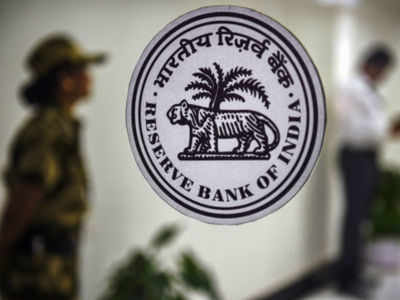- News
- Business News
- India Business News
- RBI proposes bank-like norms for big NBFCs
Trending
This story is from January 23, 2021
RBI proposes bank-like norms for big NBFCs
Large non-banking finance companies (NBFCs) are likely to be more intensely regulated and their lending to sensitive sectors like capital markets and real estate capped if the RBI were to implement proposals that it has put forward in a discussion paper.

(Representative image)
MUMBAI: Large non-banking finance companies (NBFCs) are likely to be more intensely regulated and their lending to sensitive sectors like capital markets and real estate capped if the RBI were to implement proposals that it has put forward in a discussion paper. The proposal comes at a time when an RBI panel had recommended that large NBFCs should be allowed to turn into banks.
The norms, which will be brought on a par with banks for large NBFCs, include provisions for standard assets, CEO compensation guidelines, disclosure requirements, and rules for selling bad loans.Mid-tier and large NBFCs will also need to have a centralised core banking system in place. The paper comes two months after RBI deputy governor M Rajeshwar Rao said that large NBFCS should be incentivised to either convert into banks or scale down.
The discussion paper proposes segmenting the industry into layers. There will be a base layer consisting of non-systemically important NBFCs like peer-to-peer lending platforms. The second layer would be systemically important finance companies, including specialised lenders. The third layer would be significantly important NBFCs whose failure can impact financial stability.
In addition to these companies, there would be a fourth layer. “It is possible that considered supervisory judgment might push some NBFCs from out of the upper layer of the systemically significant NBFCs for higher regulation/ supervision. These NBFCs will occupy the top of the upper layer as a distinct set,” the report said.
The RBI has historically adopted a differential regulatory structure for NBFCs. “Lighter and differential regulation has provided operational flexibility to NBFCs and helped them develop sectoral and geographical expertise, extending variety and ease of access to financial services. The extant regulatory arbitrage in favour of NBFCs has been well thought out and is conceptualised by design rather than by default,” the RBI said.
The norms, which will be brought on a par with banks for large NBFCs, include provisions for standard assets, CEO compensation guidelines, disclosure requirements, and rules for selling bad loans.Mid-tier and large NBFCs will also need to have a centralised core banking system in place. The paper comes two months after RBI deputy governor M Rajeshwar Rao said that large NBFCS should be incentivised to either convert into banks or scale down.
The discussion paper proposes segmenting the industry into layers. There will be a base layer consisting of non-systemically important NBFCs like peer-to-peer lending platforms. The second layer would be systemically important finance companies, including specialised lenders. The third layer would be significantly important NBFCs whose failure can impact financial stability.
In addition to these companies, there would be a fourth layer. “It is possible that considered supervisory judgment might push some NBFCs from out of the upper layer of the systemically significant NBFCs for higher regulation/ supervision. These NBFCs will occupy the top of the upper layer as a distinct set,” the report said.
The RBI had decided to relook at regulation and supervision of NBFCs following two large defaults — IL&FS and DHFL. “When failure of an extremely large NBFC can precipitate systemic risks. The regulatory framework for NBFCs needs to be reoriented to keep pace with changing realities in the financial sector.”
The RBI has historically adopted a differential regulatory structure for NBFCs. “Lighter and differential regulation has provided operational flexibility to NBFCs and helped them develop sectoral and geographical expertise, extending variety and ease of access to financial services. The extant regulatory arbitrage in favour of NBFCs has been well thought out and is conceptualised by design rather than by default,” the RBI said.
End of Article
FOLLOW US ON SOCIAL MEDIA















